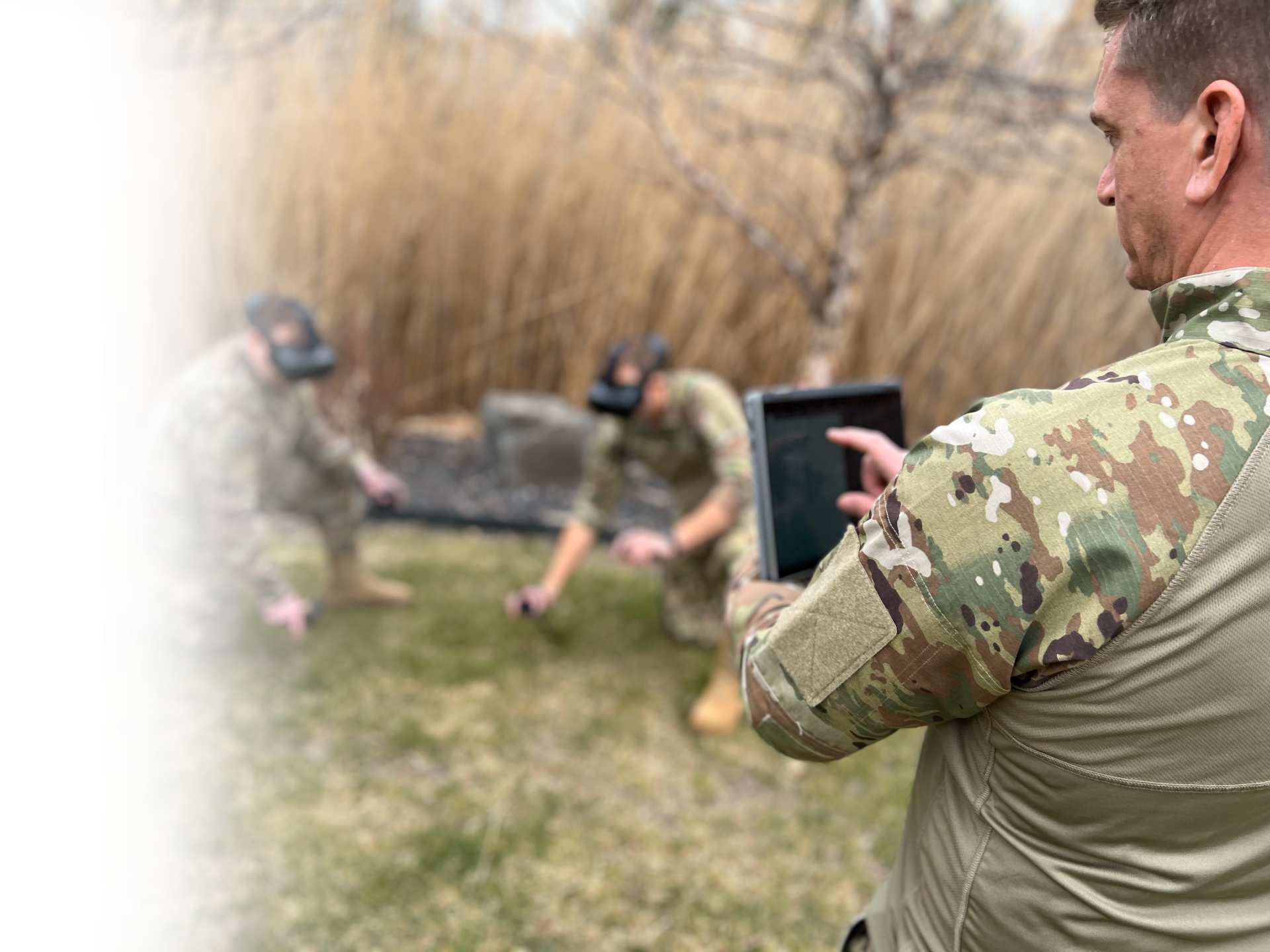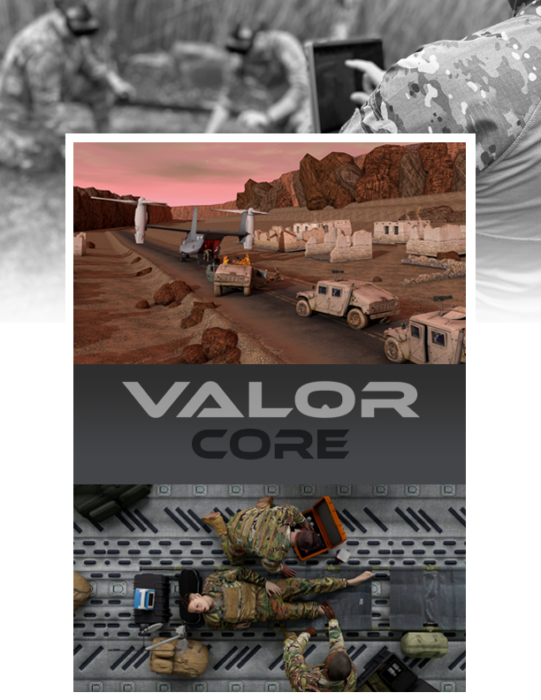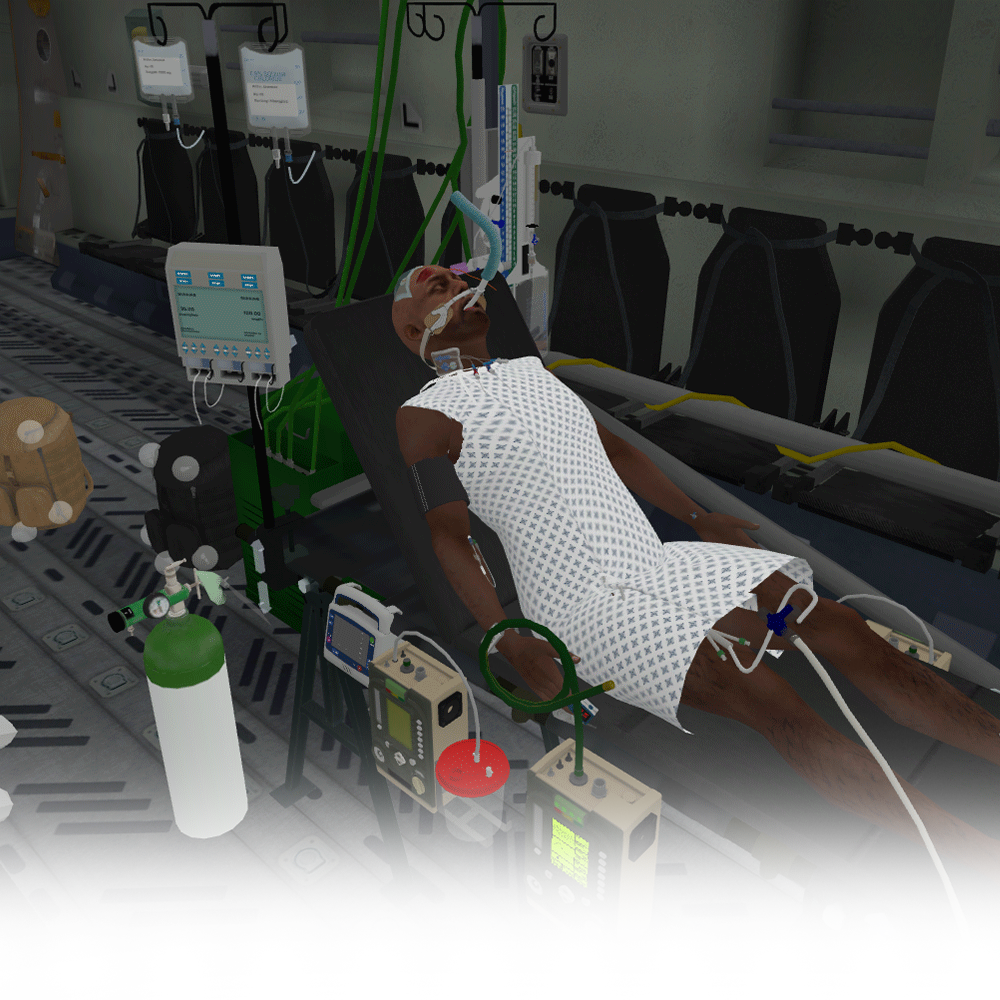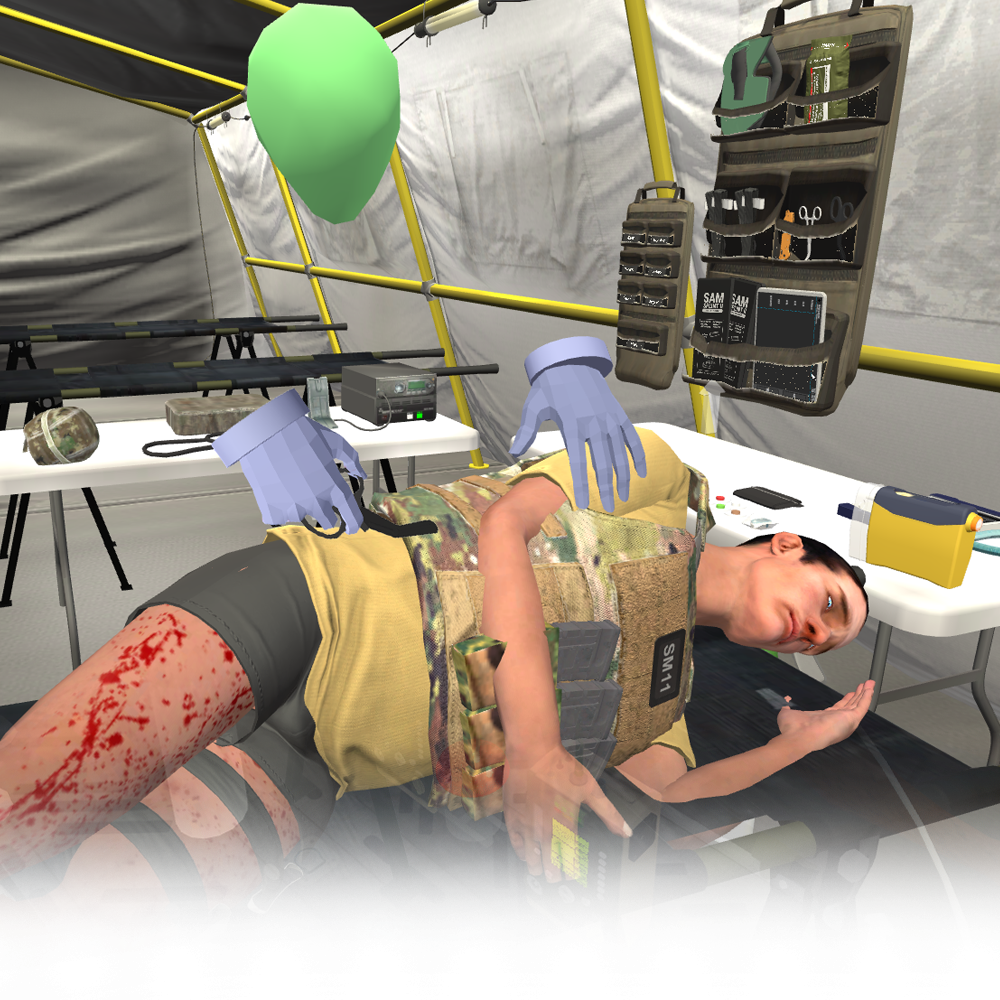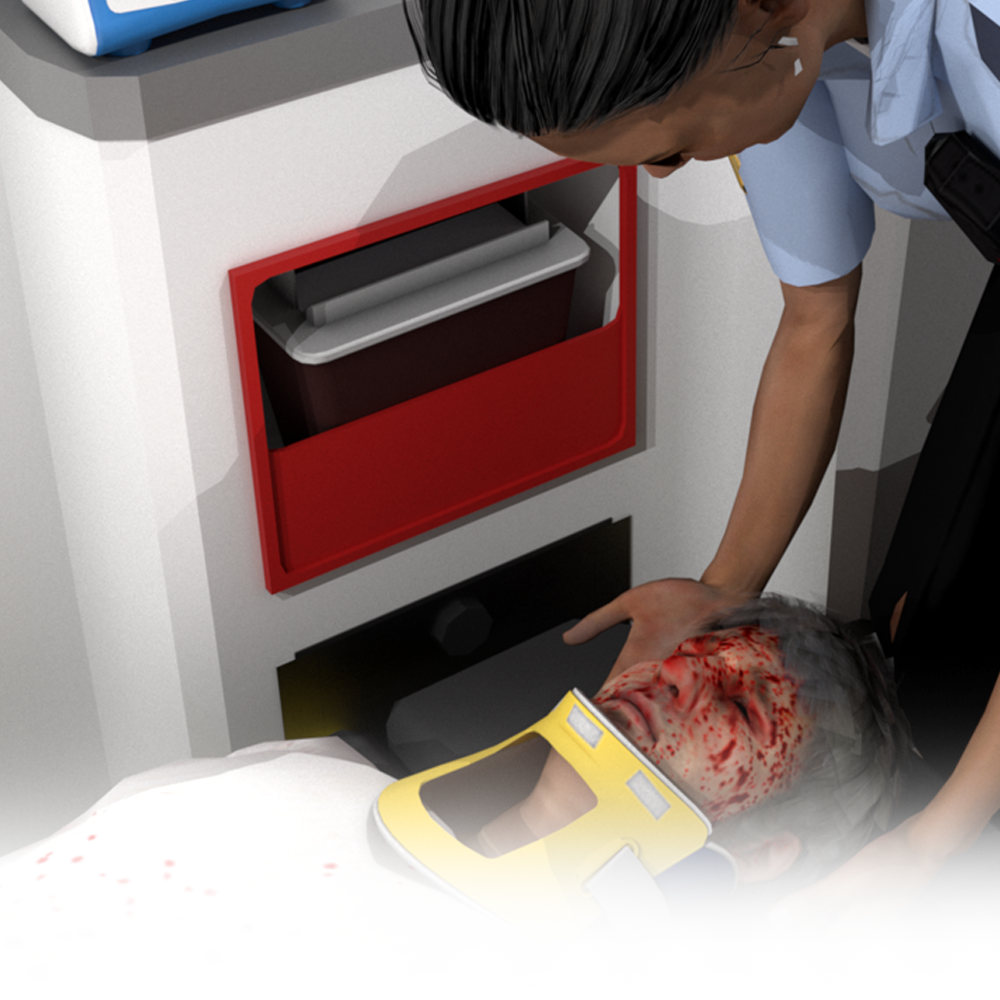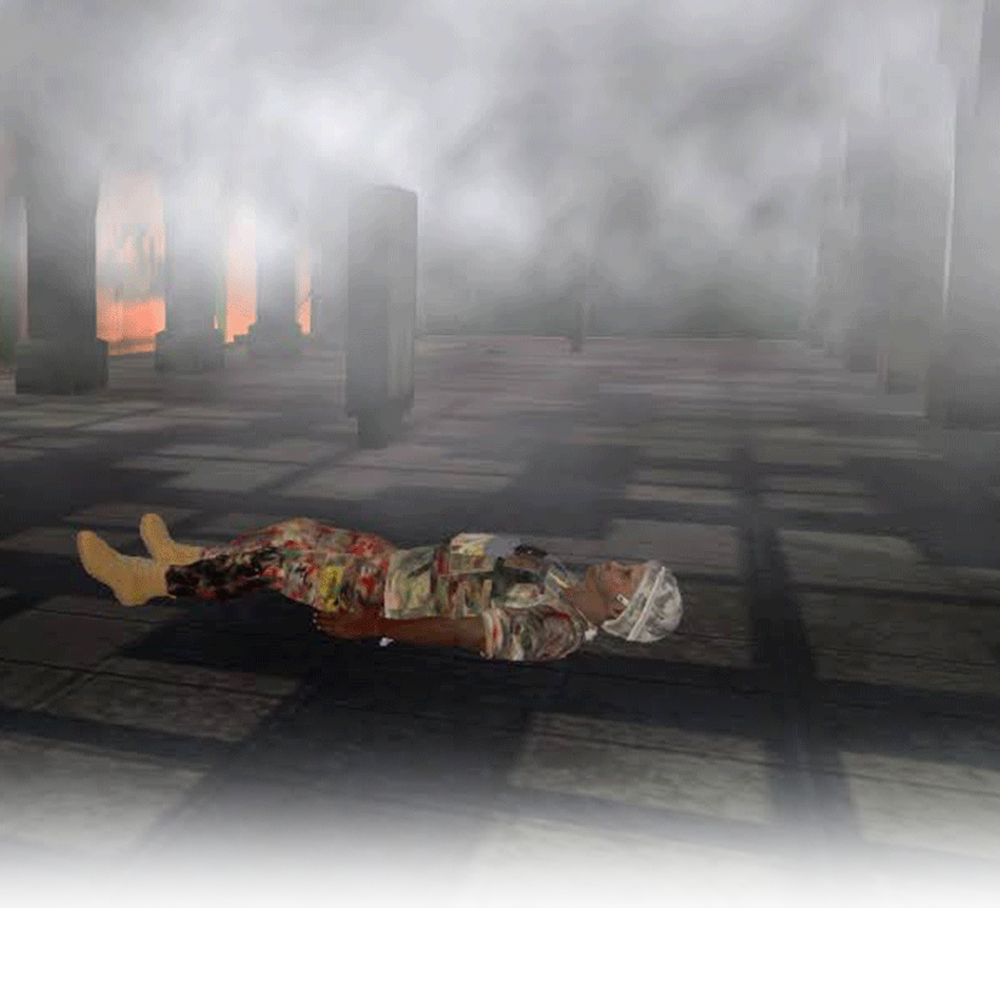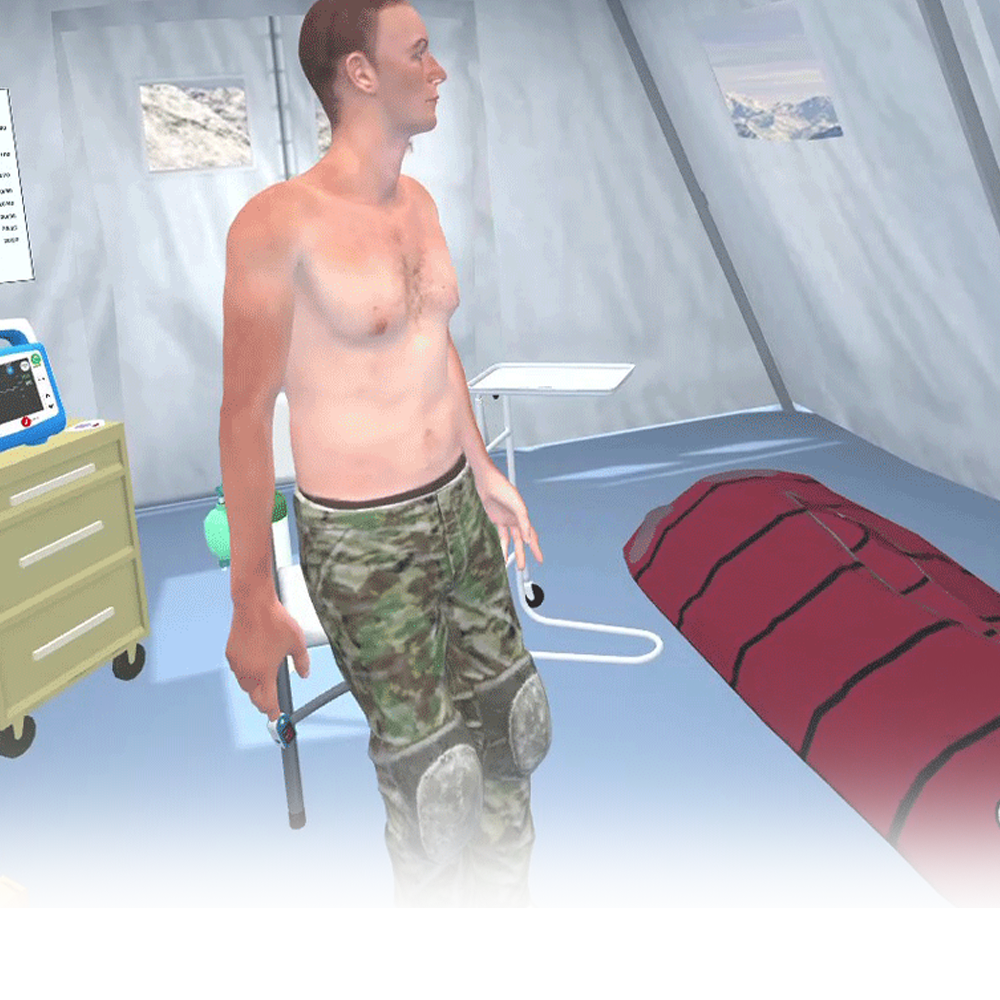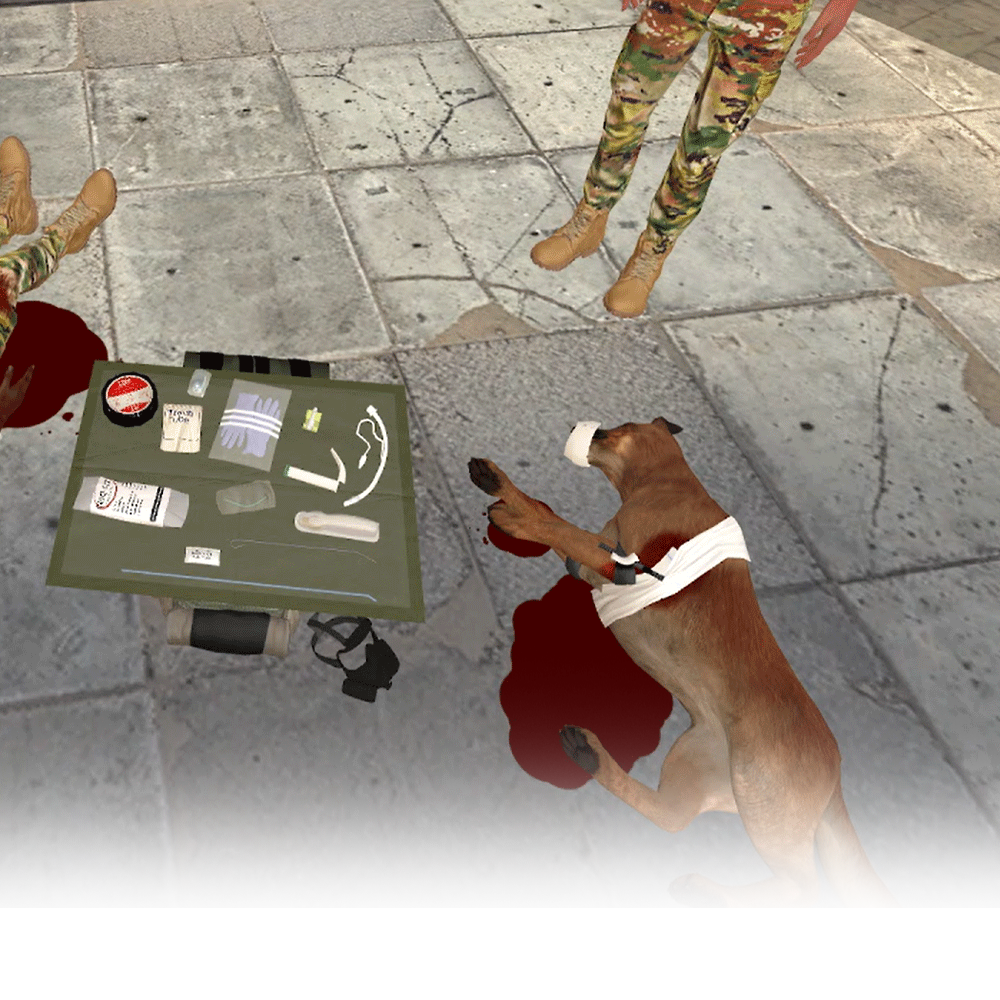What is VALOR?
SimX partnered with the US Air Force to create the Virtual Advancement of Learning and Operational Readiness (VALOR) program. VALOR makes medical simulation more comprehensive, flexible, and accessible for military personnel. Developed with over $20M in DOD R&D dollars and now deployed at 50+ DOD units, the SimX Virtual Reality Medical Simulation System (VRMSS) enables high-quality, repeatable, and accessible training for a wide array of realistic scenarios.
The SimX VALOR curricula are designed and tested in conjunction with experienced military medical educators and are based on military protocols and clinical practice guidelines. It includes a full complement of injuries and illnesses, and it spans the full spectrum of care from the point of injury to Role 4 facilities. The curricula are suitable for all responder levels with tailored learning objectives and equipment sets for every level.


